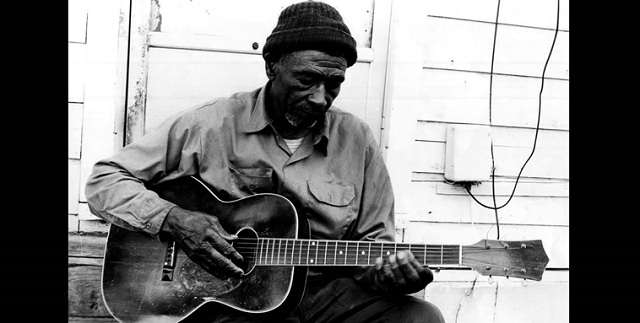Eddie Bowles: Blues Musician Collection
Born in 1884, Eddie Bowels learned to play guitar in New Orleans at the birth of jazz and blues. In 1914, he came to Cedar Falls, Iowa to work as a street paver, and he stayed here for the rest of his life, working in a variety of manual labor jobs and sharing his distinctive style of blues guitar with his many friends.
This project involved collecting materials and preparing them in exhibits on the Web and at the Hearst Center in Cedar Falls, Iowa. The exhibitions were prepared by an English Senior Seminar student in the UNI Department of Languages & Literatures under the advisement of Professor Jim O'Loughlin.
Related websites:
-
![Eddie Bowles Blues Celebration [poster] Eddie Bowles Blues Celebration [poster]](https://scholarworks.uni.edu/bowles_blues/1002/thumbnail.jpg)
Eddie Bowles Blues Celebration [poster]
A poster advertising the Eddie Bowles Blues Celebration in 2022.
-
![Eddie Bowles's Blues at the Hearst Center for the Arts 17 Feb-27-Mar 2022 [flyer] Eddie Bowles's Blues at the Hearst Center for the Arts 17 Feb-27-Mar 2022 [flyer]](https://scholarworks.uni.edu/bowles_blues/1003/thumbnail.jpg)
Eddie Bowles's Blues at the Hearst Center for the Arts 17 Feb-27-Mar 2022 [flyer]
A poster announcing an exhibit on the life of Eddie Bowles at the Hearst Center for the Arts in 2022.
-
![Eddie Bowles's Blues at the Hearst Center for the Arts 17 Feb-27 Mar 2022 [postcard] Eddie Bowles's Blues at the Hearst Center for the Arts 17 Feb-27 Mar 2022 [postcard]](https://scholarworks.uni.edu/bowles_blues/1004/thumbnail.jpg)
Eddie Bowles's Blues at the Hearst Center for the Arts 17 Feb-27 Mar 2022 [postcard]
A postcard announcing an exhibition on the life of Eddie Bowles at the Hearst Center for the Arts in 2022.
-
![Best of Eddie Bowles [album handout] Best of Eddie Bowles [album handout]](https://scholarworks.uni.edu/bowles_blues/1005/thumbnail.jpg)
Best of Eddie Bowles [album handout]
A flyer with information on how to listen to the Best of Eddie Bowles on major music streaming platforms. Includes a QR code to listen for free.
-
![Eddie Bowles's Blues: The Exhibition [handout] by Jim O'Loughlin Eddie Bowles's Blues: The Exhibition [handout] by Jim O'Loughlin](https://scholarworks.uni.edu/bowles_blues/1006/thumbnail.jpg)
Eddie Bowles's Blues: The Exhibition [handout]
Jim O'Loughlin
A flyer explaining the Eddie Bowles exhibit, including QR codes allowing access to musical excerpts or audio interviews. Also included is information concerning other events in the area.
-

"Folk Voices of Iowa: Eddie Bowles" hosted by Harry Oster-Phillip Nusbaum
Eddie Bowles
Audio recording of an episode of "Folk Voices of Iowa" featuring Iowa blues musician Eddie Bowles, hosted by Harry Oster-Phillip Nusbaum on Iowa radio station KUNI.
-
![L-7-211 Eddie Bowles 12/07/76 [Video] by Eddie Bowles L-7-211 Eddie Bowles 12/07/76 [Video] by Eddie Bowles](https://scholarworks.uni.edu/bowles_blues/1001/thumbnail.jpg)
L-7-211 Eddie Bowles 12/07/76 [Video]
Eddie Bowles
Video recording featuring Eddie Bowles playing music and interview footage. The interviewer has been identified as Mary Jo (Lasche) Russell. Please note that it was recorded at B2 speed and the tape showed signs of physical deterioration, which impacts the quality of the recording.



